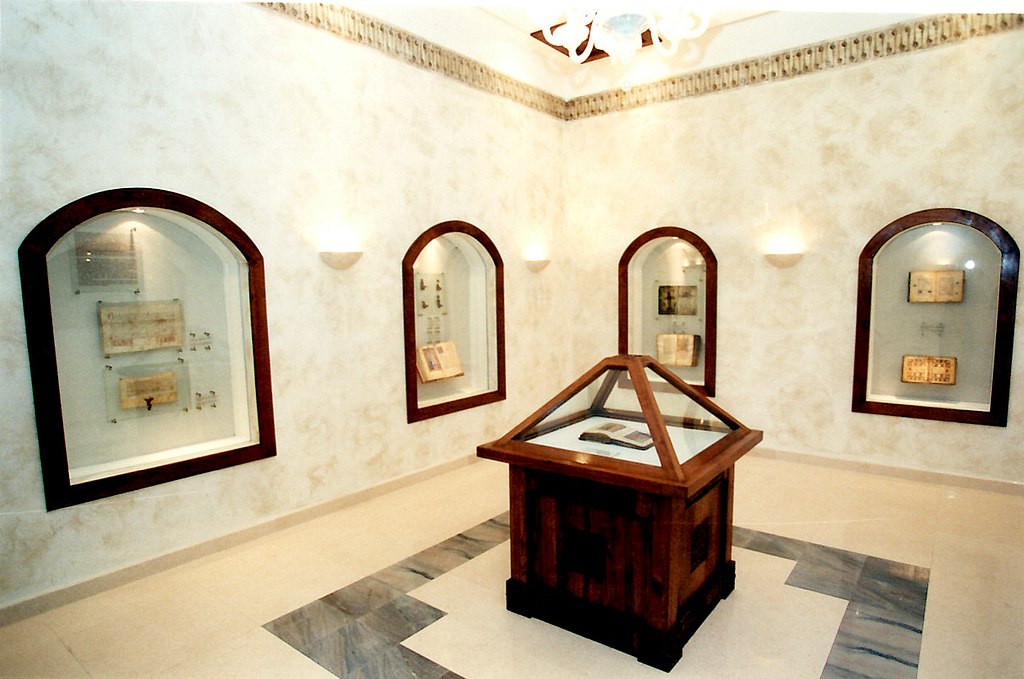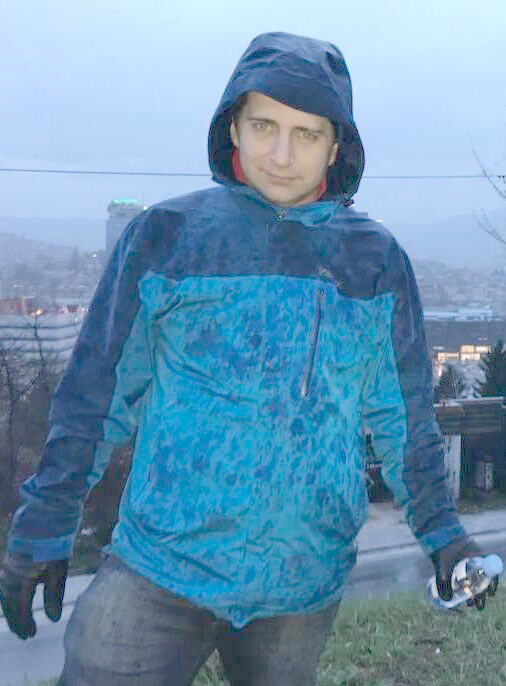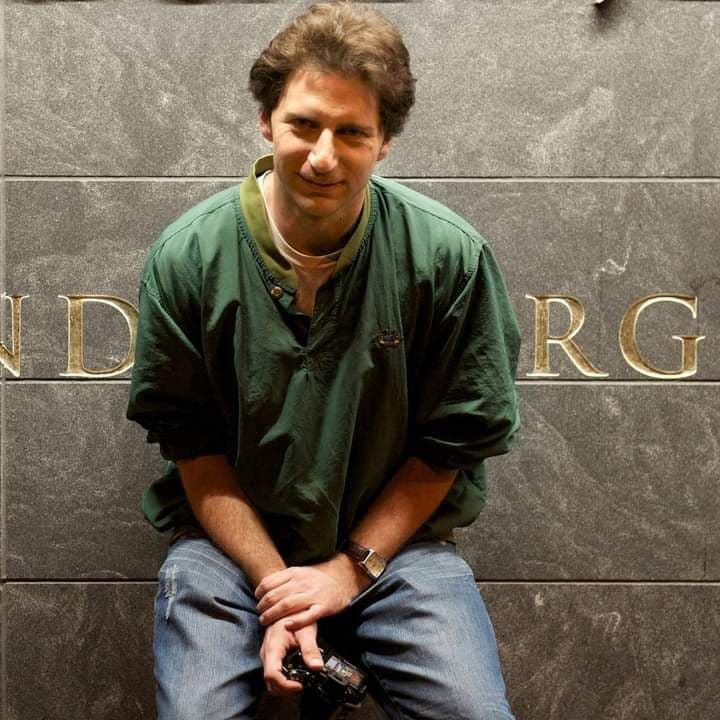Nestled in the western Balkans lies Bosnia and Herzegovina, a Muslim-majority nation bordering Croatia to the northwest, Serbia to the east, and Montenegro to the southeast. Sarajevo, its capital, is the epicenter of a diverse array of ethnicities, and for centuries, the city maintained its unique blend of religious and cultural diversity. Muslims, Orthodox Christians, Catholics, and Jews have largely coexisted for centuries. Sarajevo is one of the few major European cities to have a mosque, Catholic church, Eastern Orthodox church, and synagogue all within the same neighborhood. Thus, “Jerusalem of Europe” is surely an apt moniker to describe this hybrid locale.
Author: Jared Feldschreiber
“Jews have been living in Sarajevo for four hundred and fifty years, [and] living for so long a time, we became part of the Bosnian society,” observed Jakob Finci, President of the Jewish Community of Bosnia and Herzegovina, during an interview with TRTWorld TV in 2019. Following their expulsion by King Ferdinand and Queen Isabella of Spain in the late 15th century, some Jews settled in present-day Bosnia and Herzegovina, and “in the long history of living together with Muslims for more than five hundred years, Jews have been treated like all the other non-Muslims, which was much better treatment than the treatment of Jews in Western Europe,” continued Finci.
In a fall 2002 article published in the Bosnian magazine, Revija Slobodne Misli, Finci wrote of the storied Sarajevo Haggadah, an illuminated manuscript containing the illustrated text of the Passover story. The Sarajevo Haggadah has dated as far back as 1350 as it originated in Barcelona, Spain but persisted – miraculously — throughout the Balkan-based country for centuries. “The Haggadah was never displayed. It was always kept in a special place and was available for viewing only to the selected few,” wrote Finci. “It was not seen… [but] everybody knew about it… The book was saved and then came another mystery. The Haggadah survived without our knowing where and how. A legend says that it was hidden under the threshold of a mosque in a village at the foot of mountain Bjelasnica. Another says it was buried under a cherry tree or a walnut tree.” The National Museum of Bosnia and Herzegovina currently owns this artifact as it was also submitted by the country for inclusion in UNESCO’s Memory of the World Register. This means it holds universal value and significance.
Unlike many of its Eastern European country neighbors, Jews in Bosnia and Herzegovina never dealt with pogroms – a violent riot incited to massacre or expel them — and at the time of the onset of World War II, the estimates of the total Jewish population lay between 12,000 and 15,000. It should be noted, however, that during the war, the Nazis did create the Waffen-SS unit in Bosnia and Herzegovina called the 13th Waffen Mountain Division. The imam, Halim Malkoč, an eager collaborator, earned the German Iron Cross and was later hanged by the communist regime in 1947.
Just thirty percent of the Bosnian Jewish community survived the ruthless Nazi occupation of Bosnia and Herzegovina, and with the subsequent brutal communist dictatorship compounded with the breakup of Yugoslavia and the Bosnian War between 1992-1995, Jews found it increasingly difficult to practice their religion. While many fled in the initial stages of the Bosnian war, “in percentage, more than forty percent of the Jews who left Sarajevo came back home. The Bosnian Jewish community roughly counts more than one thousand Jews,” reminded Finci in his 2019 interview.
These days, under the steward leadership of renowned scholar, Dr. Eli Tauber, who serves as the Director of the Center for Research of History of the Jews of Bosnia, a renaissance to restore proud Jewish tradition in Bosnia is underway. Under Tauber’s supervision, the new archives will be established in Sarajevo devoted to Bosnian Jewry dating back to the 16th century. It will be open to the public in the next two years. Its primary mission will serve to “archive to collect and unify archival material related to [country’s] Jews,” as written in Sarajevo Times.
The work began in earnest in October 2022, and Dr. Tauber stated that the cooperation agreement “was signed with the Archives of Bosnia and Herzegovina, Travnik and Bihać, the Croatian State Archives, and the Jewish Historical Museum.” Tauber’s stated purpose “will accentuate the Jews’ arrival in Bosnia and highlight their profound contributions.” Tauber also told Sarajevo Times that the material has been collected for twenty years. The archive will consist of all types of different original copies, photos, and scans of important documents from all over the world. This will include family albums to archival documents, which will largely be in Bosnian, German, and Turkish.
“I am very glad that [the Jewish community of Bosnia and Herzegovina] is realizing [its aim] to open its archive,” Ljiljana Mizrahi, the Honorary President of the Holocaust Fund to the Jews from Macedonia, tells CEA Magazine. “I expect that the archive, in collecting documents and [essential] photographs, will build important and meaningful archival data. Dr. Tauber is a wonderful, hard-working man and an excellent organizer, and I believe that he and his team will do an excellent job in the preservation of the Jewish historical tradition of Bosnia and Herzegovina.”

The photo was provided by Eli Tauber.
“I am sure that the public will welcome this step of an archive commemorating the arrival of Jews in Bosnia and Herzegovina,” adds Edina Secerovic, a Sarajevo-based journalist. “Citizens [here] are used to living with one another. While Holocaust Remembrance Day is an important part of that history, it is taught sporadically in schools, so I hope that politicians will also recognize the importance and the wealth of diversity [provided by these archives].”
In this wide-ranging exclusive interview, CEA Magazine catches up with Dr. Eli Tauber. In our conversation, Dr. Tauber breaks down the rubrics of how and what led to the establishment of the Jewish archives in Bosnia and pays tribute to one of the region’s most culturally rich scholars.

The photo was provided by Dr. Tauber.
CEA Magazine: Please give a background to your career, and perhaps summarize how your professional life’s purpose may have led you to establish Jewish archives in Bosnia.
Eli Tauber: I grew up in a Jewish family that was connected to a Jewish municipality. My mother was the president of the women’s section, and my grandmother was the vice president. I twice [served] as the president of the youth and a member of the presidency of our community. I have always been interested in history and tried to [be involved in] research.
I had published articles in newspapers about Jewish cuisine and lectured on Jewish humor, and [the notion of] “Jewish destiny.” I was also a journalist at the Oslobođenje publishing house. When war came to Bosnia, between ‘92- ‘95, I immigrated to Israel with my family. Twelve years later, I returned with the desire to help [foster] economic relations between Bosnia and Israel. However, fate wanted me to change my plan. I decided to continue with an academic career, and I earned my master’s degree. At the same time, I finished my first book, The Illustrated Lexicon of Judaism. I then earned my doctorate on the Holocaust in Bosnia and published my third book.
Upon doing research on people who saved Jews in World War II, and [immersing myself in] numerous books, exhibitions, and scientific works, I realized that it was high time to form an archive.

The photo is in the “vault room” and provided by WikiCommons.
CEA: Which historical individuals in your professional — and academic – life gave you the greatest sources of inspiration, and why? Which books are your favorite?
ET: We turn to different inspirations in different periods of our lives. If we talk about the historical moments to which I devoted tens of years of my work and research, undoubtedly my Jewish education took part in it, which little by little brought me closer to fundamental research, opening me up to new perspectives. It has set before me a task that I accepted as [my life’s] mission. [Nazi hunter] Simon Wiesenthal was important to me, which influenced me to make a book about the Righteous. Later, it was my mentor Ivo Goldstein — and then Adorno, Zygmunt Baumann, and Hannah Arendt. Today, the Serbian writer Djordje Lebovic amazes me.
CEA: So, briefly, what led you toward conceiving the need to launch this initiative of unveiling Jewish archives of Bosnia and Herzegovina to the public?
ET: [As you may have already gathered], I am a researcher of Judaica and especially about Bosnia. The books I’ve written are very connected with their history, traditions, and customs. I spent a lot of hours in archives and libraries, and I’ve understood that if I want to write about Jewish history in Bosnia, I must find and collect many facts to be in one place. Thus, I decided to establish an archive [devoted to] Jewish communities in Bosnia.
CEA: Where did the Jews of Bosnia originate from?
ET: The earliest records show that Jews settled in Sarajevo by 1530 and were Sephardic, which means they were the descendants of Jews who lived in Spain and Portugal before being expelled by King Ferdinand and Queen Isabella in 1492. Where did the Jews in Bosnia come from? The latest historical research has confirmed to us that after the victory in the Battle of Mohacs, Suleiman the Magnificent conquered Buda in 1530, and he decided not to execute the Jews who defended Budiim but to invite them to his empire. Jews accepted his invitation and went down the Danube to Belgrade. A group of thirty families separated and came to Sarajevo.
CEA: Which careers did Jews partake in?
ET: Jews soon engaged in various trades and banking, and very quickly, worked their way into the governing bodies of the city. The most capable and well-known received the title of effendi and were representatives in the city council of Sarajevo, such as Zeki Effendi. Javer Efendi Baruh, who had previously become the richest merchant, was delegated to the parliament in front of the Bosnian vilayet (a major administrative district or province with its governor). This system continued until the end of the 19th century when Bosnia came under the rule of the Austro-Hungarian Empire.
CEA: Things got better or worse for Jews under the Austro-Hungarian Empire?
ET: Things changed from good to better! While the country was still occupied, it was more like a “goodbye” to the old dying empire and a “hello” to something much more enlightened. The Jews began to prosper even more so as the new European concepts of freedom, citizenship, and unity were brought to the state. During the Austro-Hungarian occupation, the Sephardim were joined by Ashkenazim who arrived from the Habsburg Monarchy. The participation of Jews in public and political life was also very prominent in this period as Jews were freely appointed to various positions in regional and local governments. For example, in Sarajevo, the Austro-Hungarians established a city council in which three to four seats were secured for members of the Jewish community.

The scan from the magazine was provided by Mahir Sahinovic.
CEA: Then World War I broke out…
ET: Then came the First World War — after which Bosnia became part of the Kingdom of Serbs, Croats, and Slovenes, and was later renamed the Kingdom of Yugoslavia. During this period, the Jews in Sarajevo fared even better. Sarajevo became the center of a much larger Jewish community, and it became the center of Jewish life for the entire Kingdom of Yugoslavia. When they decided to build a school for rabbis in Yugoslavia, they built it in Sarajevo. They did not build it in Belgrade, nor Zagreb, but in Sarajevo! “Jewish life is the strongest in Sarajevo, and future rabbis must go that way,” leaders of the Jewish community would say at the time. During the Kingdom of Yugoslavia, every fifth person in Sarajevo was a Jew.
CEA: Getting back to the establishment of the Jewish archives in Bosnia, why now?
ET: [it would appear that] we started collecting our documents quite late. It should’ve been done fifty years ago. However, it is, in fact, not too late as some documents, photos, old newspapers, and testimonies can still be found. True, it is not an easy road, but I am still ready to cross it. All of this proves necessary for writing a respectable history about the Jews of Bosnia. We should not forget that we have a unique Jewish cemetery in the world and the Sarajevo Haggadah is located here. It is unique in its completeness and the stories which accompany it.
CEA: So, as for the Sarajevo Haggadah, will this item be featured within the archives?
ET: The Sarajevo Haggadah is a unique example and an invaluable part of the cultural heritage of Bosnian Jews, but also of Bosnia and its [entire] history. This artifact is housed in the National Museum of Bosnia and Herzegovina, which is also its owner. There is no possibility that it will be in our archive, but we have outstanding copies in Bosnian, French, and English that will be available to the public.
CEA: Switching to education, is the Holocaust being taught in Sarajevo’s classrooms? And if so, in what context?
ET: The problem of reading and learning about the Holocaust has existed for a long time. While in Austria, I tried to influence the government’s decision that everything should be taught about the Holocaust. In the beginning, I led two groups of history professors to the Mémorial de la Shoah [in Paris, France]. Their [scholars] later came to educate our professors here [in Sarajevo]. But then it stopped, and no one showed any interest in continuing. There was an initiative two years ago launched to form a Holocaust Museum in Sarajevo. I joined it and found a willingness to start with education. I am now preparing a supplement to the manual on the Holocaust in Bosnia and Herzegovina, and in January, we will start training history teachers in Sarajevo.
CEA: As Jews are still a minority in the Balkans, how would you evaluate life as like for them? Are Bosnian lawmakers in the region, for instance, well-versed in the tenets of Judaism, and what would you say are their attitudes in terms of relations with Israel?
ET: When we look at the Balkans, we must know that not every part had the same legislation, nor was it implemented in the same way. The livestock part of the Balkans [had been] under Turkey, while the western part was mostly under the Austro-Hungarian monarchy. This [discrepancy] had a significant impact on the development of the Jewish community in the region. In the Balkans, the Sephardim remained quite closed, which allowed them to preserve their language, song, and proverbs five hundred years after their persecution from Spain. [This was true while] in other parts there had strong assimilation and, thus, a loss of [Jewish] identity.
If we talk about the relations between Bosnia and Israel, they tend to be at the diplomatic level with the exchange of embassies. And yet, Israel does not have its permanent embassy in Bosnia as it is in Albania.
CEA: To sum up, what are the main highlights of the Jewish archives in Bosnia, and what can the public expect in two years?
ET: We have a big job ahead of us. Archival material that is related to five hundred years of activity of a Jewish community will be collected. In addition, we still need to find [outstanding] documents, which prove the arrival of the first Jews in Bosnia, such as the construction of the synagogue, and biographies of some important individuals. There will be different original copies, photos, and scans collected all over the world – from family albums to archive documents.
We believe we will finish the first part in two years that will be open to the public. We still must finish our research in Jerusalem, Vienna, Budapest, Istanbul, Belgrade, and Zagreb.
The archive of the Jewish community of Bosnia and Herzegovina will be divided into three historical periods: Ottoman, Austro-Hungarian, and the period between the two world wars and the Holocaust. It will include specially treated areas such as Sephardic, science, historical, and well-known artistic figures.

The photo was taken by Mahir Sahinovic.
CEA: How have your compatriots responded thus far to the establishment of the archives?
ET: I can say that this initiative of mine was not [initially] very well received by Bosnian society. But I am incredibly pleased that everyone is still willing to lend their support. Even in the phase of establishing the archives, some state institutions financially supported the adaptation of our space and the acquisition of necessary equipment. This also includes archiving the collected archival material, such as scanning equipment, and giving support in agreements with various archives throughout the country and within the region.
CEA: Personally, what would you say is your greatest gift of being a Jew within a tiny Jewish population, such as Bosnia and Herzegovina? Do you believe that undertaking such a bold initiative like this fulfills your destiny?
ET: I will try to answer this question by repeating my thesis that Bosnia is a country where your neighbors are not the “people next door,” but know you well. They try to understand what you do, where you go, where you come from, and how you cut your hair. It’s all inspiring. Perhaps this is because it is a country where the concept of anti-Semitism is almost unknown. It is a country where there has never been a ghetto and a country from which Jews have never been expelled. It is where a pogrom has never happened and if it had not been for the Second World War and the Holocaust, the country would not have talked about Jewish victims.
At this moment, when we created the archives of the Jewish community of Bosnia and Herzegovina, we took this first step toward the formation of the Holocaust Museum. This is only just the beginning!
Cover Photo Credit: Mahir Sahinovic

Jared Feldschreiber is a freelance reporter and contributor to Central European Affairs Magazine. He is based in Warsaw, Poland, and often chronicles literary figures, filmmakers, and dissidents in nascent democracies. Reckless Abandon, his novella, is available worldwide.
Twitter: @jmfeldschreiber
Photo credit: Ilan Sherman



